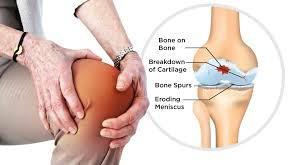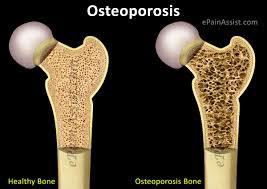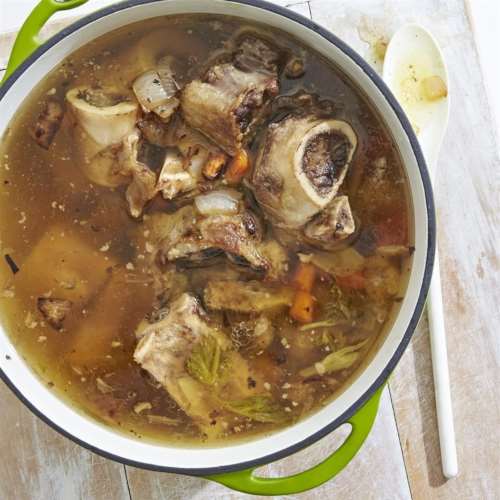 ATC
ATC
You Can Beat Arthritis
Arthritis is an inflammation of the joints. It can affect one joint or multiple joints. There are more than 100 different types of arthritis, with different causes and treatment methods. Two of the most common types are osteoarthritis (OA) and rheumatoid arthritis (RA).

-
Osteoarthritis (OA) is the most common form of arthritis and it affects millions of people. It primarily strikes the hands, knees, hips, feet and back.
-
It occurs when cartilage in the joints begins to wear down after injury—usually after age 45.
-
Foods that contain high levels of anti-oxidants, such as fruits and vegetables, may reduce risk of arthritis.
-
An alternative treatment for Arthritis is Turmeric root. Chew a handful every day for a couple months to get significant relief.
-
Performing some stretches and range-of-motion exercises in the morning can also help.
-
Sleep on a firm mattress and pillow that support your neck and back. Avoid caffeine, nicotine and alcohol, which can prevent you from sleeping well.
-
Some cases of arthritis are caused by misaligned joints or other "body mechanics" problems. Such problems place undue stress on the joints, causing cartilage to break down.
-
If you are overweight, take steps to lose the excess weight. If your weight is normal, make sure it stays that way.
Osteoporosis
An unexplained foot fracture may be an early sign of osteoporosis. Research suggests that people who suffer foot fractures that are not due to accidents or repeated stressful motion should ask their physicians to consider giving them a bone-density test
for osteoporosis.

Osteoporosis can be a complication from chronic illnesses like chronic obstructive pulmonary disease (COPD), asthma and other chronic diseases treated with steroids.
At-risk patients should ask a doctor about bone-density testing and calcium, Men may need to have testosterone levels tested too.
Ways to Lower Your Chances of Osteoarthritis
-
Keep to a Healthy Weight: Extra pounds stress your joints and can wear away the soft cartilage at the ends of your bones more easily.
-
Control Your Blood Sugar: High glucose (blood sugar) levels, which happen with diabetes, can form molecules that stiffen and weaken your cartilage. This leads it to break down more easily under stress.
-
Keep Moving: Exercise helps prevent osteoarthritis by keeping extra pounds off. Plus, movement in the joint triggers the release of synovial fluid that lubricates and nourishes the cartilage.
-
Strength Training: This could be pushups and pull-ups or weightlifting. You strengthen muscles to better support your joints and help stop or slow the breakdown of cartilage.
-
Eat Fatty Fish: Think salmon, tuna, halibut, cod, mackerel, and herring. These types of fish are rich in omega-3 fatty acids, which help lessen inflammation that can be hard on your joints.
-
Take Care With Repeated Motion: Doing the same actions over and over, like swinging a tennis racket or lifting boxes, is a common cause of osteoarthritis. It slowly wears away your cartilage. If possible, take regular breaks to give your body a chance to rest and heal.
-
Choose Your Shoes Carefully: Women make up two-thirds of people with knee osteoarthritis. High heels, which put more stress on the front and back of the knee, are part of the problem.
-
Listen to Your Body: If a certain motion or activity causes serious joint pain, stop! Likewise, you might have overdone it if you still have pain an hour or so after you exercise
Bone is a living substance that contains blood vessels, nerves, and cells
Two types of cells control your bone structure:
-
Osteoblasts – cells that build your bones
-
Osteoclasts – cells that break down old or damaged bone to make room for new bone
Ideally, you want to start giving your bones the care they need as early in life as possible. The foundation for strong bones starts at a very young age.
Your “bone growth” stage stretches from birth until about age 30. Then you enter the normal age-related bone mineral loss period that continues for the rest of your life.
If not given the right kind of care, bones can begin to weaken early in life. It’s a quiet, symptom-less process that steals away your bones. You can’t feel it happening, at least not in the early stages
And here’s something that every woman needs to know: Your normal bone loss accelerates during and after menopause for about five to seven years before returning to the slightly slower rate that men experience.
You can lose as much as 35 percent of your bone density during those few, short years!
Some of the most common bone health antagonists that you may not be aware of:
-
Statin Drugs
-
Antidepressants
-
Osteoporosis Drugs
-
Undiagnosed Gluten Intolerance
-
Smoking and Drinking
-
Soft Drinks
Eleven Ways to Boost Your Bone Health at the Kitchen Table

1. Start your morning with yoghurt for breakfast.
2. Adding milk to your coffee is an easy way to boost your calcium intake.
3. Soymilk is a good option for those who are lactose intolerant or on a vegan diet. Tofu, also known as bean curd, has a low calorie count and relatively large amounts of protein.
4. One glass of wine with your dinner may be beneficial to your bone health by stimulate bone-forming cells within the body.
5. Cheeses are a delicious source of calcium and protein, two of the key nutrients for bone health.
7. Lean red meat, poultry and fish, as well as eggs and dairy foods, are excellent sources of animal protein. Vegetable sources of protein include legumes (e.g. lentils, kidney beans), soya products (e.g. tofu), grains, nuts and seeds.
8. It can’t be overstated – vegetables are great for overall health.
9. Try boosting your vitamin D levels by consuming vitamin D rich foods. Try adding oily (fatty) fish to your menu plan at least once a week.
10. Some mineral waters are calcium boosters.
11. Bone broth – Drinking bone broth may be beneficial for the joints and digestive system, among other things.
Bone Broth
Bone broth is a liquid containing brewed bones and connective tissues. To make bone broth, people use cow, chicken and even fish bones. Drinking bone broth may be beneficial for the joints and digestive system, among other things.
Simmering the bones in water with some vinegar helps release nutrients from the marrow within the bones, as well as break down other tissues into the water. The result is a flavorful, nutritious broth.
1. It is highly nutritious
Bone marrow is rich in nutrients such as:
Iron, vitamins A and K, fatty acids, selenium, zinc, manganese
Bone broth may provide trace amounts of these nutrients, and many claim that consuming it is an easy way to take in these nutrients in a form that is easier to digest.
Adding other ingredients, such as vegetables, to the broth may also add additional nutrients.
2. It protects the joints
3. It helps fight osteoarthritis
4. It may help reduce joint inflammation and heal the gut
5. It may aid sleep
6. It may support weight loss
How to make bone broth
A slow cooker can be useful when making bone broth.
Stores carry bone broth, but it is also very easy to make at home.
A simple way to make it is to save bones from other meals. For instance, a chicken carcass that is complete with beak and claws may make a good basis for a bone broth.
Many butchers and meat sections at the market or grocery stores also sell any bones that they have available.
To make homemade bone broth, try the following recipe:
Ingredients:
-
1 organic whole chicken or 3–4 pounds of bones and tissues
-
8c of water
-
4 -6 stalks of celery, finely chopped
-
½ white or yellow onion, finely chopped
-
3 cloves garlic, finely chopped
-
1 Tablespoon chopped fresh parsley
-
1 inch ginger root, finely chopped
-
½ teaspoon sea salt
-
½ teaspoon of apple cider vinegar
Directions:
Boil the ingredients together in a large pot or slow cooker, and then reduce to a simmer for 3 to 8 hours and then cool for an hour. The thicker your bones, the longer you want to simmer. Fish bones only require about 3 hours of simmer time; chicken bones about 5 hours, and beef bones around 8 hours for optimal extraction of nutrients.
Strain through a cheesecloth and pour into smaller containers for storage in the refrigerator. Heat these smaller containers as needed, and the broth will last longer.
Summary
Bone broth contains readily available nutrients and minerals that may help keep the bones working at its best. How much of any nutrient will be in each individual batch is difficult to predict.
CALCIUM REQUIREMENTS AS WE AGE
Build Bones in Your Youth
Healthy habits as a child or teenager can pay off years later with stronger bones. Young people can build their bones by eating calcium-rich foods, getting enough vitamin D (through sunshine or diet) exercising regularly.
Here are the recommended daily intakes of calcium by age:
Under 1 year: 200-260 mg
1 – 3 years: 700 mg
4 – 8 years: 1,000 mg
9 – 18 years: 1,300 mg
19 – 50 years: 1,000 mg
51 – 70 men: 1,000 mg
51 + women: 1,200 mg
71 + years: 1,200 mg
By age 30, the average woman has built 98% of her peak bone mass.
